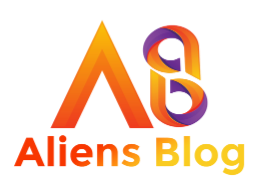CIOs: Consider 3 Best Practices When Using Emerging Technology to Achieve Business Results
Your email has been sent
It’s a great time to be a CIO. Business has never been so focused on using technology to drive growth. And technology has never been so accessible. The variety of technology options and faster delivery methods (thank you, cloud) have streamlined the process of identifying, buying and deploying technology and services. Generative AI is only one — granted, a big one — example of this.
But while the increased interest in new and emerging technology from business partners is exciting, it does bring with it some risk and could change how IT works with its business partners. Understanding those risks and guiding business leaders on how best to approach them is critical for CIOs when shaping the IT-business partnership.
Did you ever think you would see so much interest in AI? What used to be a complex and mysterious technology to the average employee is now showing up on the nightly news and mentioned in nearly every meeting you attend. Generative AI has made the technology accessible and useful to a wide variety of business roles — from the CEO to across the entire organization. Nearly every function and role can see some benefit from genAI.
According to Forrester, 89% of AI decision-makers said their organization is expanding, experimenting with or exploring the use of genAI. But beyond those approved use cases, many workers are using ChatGPT or other non-sanctioned genAI tools in the office — in fact, Forrester recently coined the term BYOAI for bring-your-own-AI and predicts that 60% of workers will use their own AI to do their jobs in 2024.
That’s a lot of shadow AI, and it brings both privacy and brand concerns (i.e., What are employees putting into those genAI tools, and what proprietary IP might your firm be losing?). Unfortunately, the IT organization cannot manage technology it doesn’t know about. And the barrage of pitches we all receive from technology vendors and service providers can spark some of that shadow AI. Vendors will often say they have a technology solution for a specific process, but the reality is that you may have to fix the process before you can successfully apply a tech solution to it. Another issue that can result from this trend is overlapping functionality, as each of the various software platforms provides its own genAI capability.
DOWNLOAD: This customizable Shadow IT Policy from TechRepublic Premium
When evaluating emerging tech, there must be a balance. You want to be innovative and make the most of the right technologies, but avoid being distracted by “shiny object syndrome.” Given that applying the wrong technology to business processes or use cases can be a disastrous waste of time and money, this can have the opposite effect as intended — slowing productivity, frustrating workers and creating more technical debt.
And that’s where the IT organization can bring real value in today’s environment.
As more technology spending is initiated outside the IT organization, it is changing the role of both the CIO and IT teams. As CIOs step into the new role of trusted advisor to their business partners, they are helping them understand new and emerging technologies and providing guidance on how they can best leverage those technologies to solve real business challenges. This culminates in three key best practices.
Whether it’s a technology project initiated outside of IT or within the IT organization, the decision should start with these questions:
This is where IT-business alignment is critical. When IT is aligned with the business at all levels — understanding its goals and desired outcomes — the technology evaluation process becomes more streamlined, and there is clarity about the right choice for each use case. When IT is not aligned with the business objectives or less engaged with business partners, there is a higher risk of deploying technology for technology’s sake and building up technical debt.
How do you move “business and IT alignment” from a bullet on a slide to an action in your organization? To use Forrester as an example, we aligned IT team members to specific business functions so they could develop expertise in that function’s objectives and document vital business processes. When a technology evaluation discussion arises in that function, the business is more likely to consult with IT because there is a higher level of trust and familiarity between the two organizations.
Forrester’s plan-on-a-page approach is a best-in-class method for ensuring strategy alignment. Having direct visibility into the most important objectives for our various business partners allows us to align our work and budgets with those objectives. Without that level of visibility, there is a risk that non-prioritized business projects could absorb vital IT resources and budgets.
Ultimately, if you reach a point where IT becomes an enabler for the business to achieve its most critical goals, the risk of the business veering off course due to shiny object syndrome becomes much lower. Additionally, business leaders will have the confidence to consult IT first and get their input before pursuing emerging tech solutions.
This article was written by Mike Kasparian, who serves as chief information officer at Forrester, leading a global IT organization that manages all internal business technology. He is responsible for leveraging technology to drive productivity and deliver business value, ensuring network and data security, and optimizing technology operations.
Prior to this role, Mike held various positions across Forrester’s organization over the past 18 years, including vice president of business technology strategy and vice president of product for research and analytics. Mike also worked in product marketing, operations, and was part of the team that launched the project consulting business. He began his career at Forrester in sales working with the company’s largest global accounts.
Mike is a summa cum laude graduate of the University of Massachusetts, Amherst.
Discover the secrets to IT leadership success with these tips on project management, budgets, and dealing with day-to-day challenges. Delivered Tuesdays and Thursdays
Discover the secrets to IT leadership success with these tips on project management, budgets, and dealing with day-to-day challenges. Delivered Tuesdays and Thursdays
CIOs: Consider 3 Best Practices When Using Emerging Technology to Achieve Business Results
Your email has been sent
Get the web’s best business technology news, tutorials, reviews, trends, and analysis—in your inbox. Let’s start with the basics.
* – indicates required fields
Lost your password? Request a new password
Please enter your email adress. You will receive an email message with instructions on how to reset your password.
Check your email for a password reset link. If you didn’t receive an email don’t forgot to check your spam folder, otherwise contact support.
This will help us provide you with customized content.
Thanks for signing up! Keep an eye out for a confirmation email from our team. To ensure any newsletters you subscribed to hit your inbox, make sure to add newsletters@nl.technologyadvice.com to your contacts list.

Uncategorized
CIOs: Consider 3 Best Practices When Using Emerging Technology to Achieve Business Results – TechRepublic
- by Alienskart
- 29 May 2024
- 0 Comments
- 5 minutes read
- 34 Views
- 6 months ago
Aliens Bloggers Is a Lifestyle Blog


Leave feedback about this